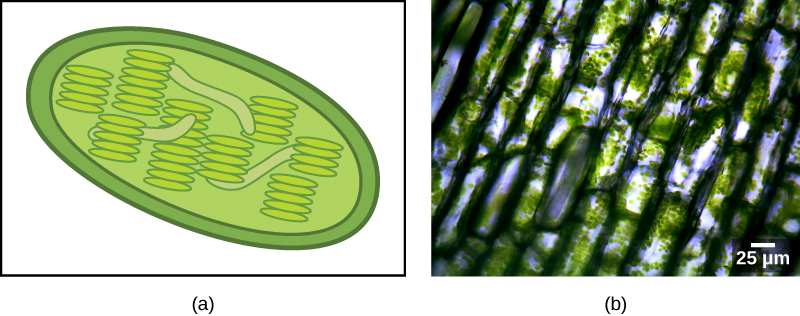| << Chapter < Page | Chapter >> Page > |

Like mitochondria, plastids appear to have an endosymbiotic origin. This hypothesis was also championed by Lynn Margulis. Plastids are derived from cyanobacteria that lived inside the cells of an ancestral, aerobic, heterotrophic eukaryote. This is called primary endosymbiosis, and plastids of primary origin are surrounded by two membranes. The best evidence is that this has happened twice in the history of eukaryotes. In one case, the common ancestor of the major lineage/supergroup Archaeplastida took on a cyanobacterial endosymbiont; in the other, the ancestor of the small amoeboid rhizarian taxon, Paulinella , took on a different cyanobacterial endosymbiont. Almost all photosynthetic eukaryotes are descended from the first event, and only a couple of species are derived from the other.
Cyanobacteria are a group of Gram-negative bacteria with all the conventional structures of the group. However, unlike most prokaryotes, they have extensive, internal membrane-bound sacs called thylakoids. Chlorophyll is a component of these membranes, as are many of the proteins of the light reactions of photosynthesis. Cyanobacteria also have the peptidoglycan wall and lipopolysaccharide layer associated with Gram-negative bacteria.
Chloroplasts of primary origin have thylakoids, a circular DNA chromosome, and ribosomes similar to those of cyanobacteria. Each chloroplast is surrounded by two membranes. In the group of Archaeplastida called the glaucophytes and in Paulinella , a thin peptidoglycan layer is present between the outer and inner plastid membranes. All other plastids lack this relictual cyanobacterial wall. The outer membrane surrounding the plastid is thought to be derived from the vacuole in the host, and the inner membrane is thought to be derived from the plasma membrane of the symbiont.
There is also, as with the case of mitochondria, strong evidence that many of the genes of the endosymbiont were transferred to the nucleus. Plastids, like mitochondria, cannot live independently outside the host. In addition, like mitochondria, plastids are derived from the division of other plastids and never built from scratch. Researchers have suggested that the endosymbiotic event that led to Archaeplastida occurred 1 to 1.5 billion years ago, at least 5 hundred million years after the fossil record suggests that eukaryotes were present.
Not all plastids in eukaryotes are derived directly from primary endosymbiosis. Some of the major groups of algae became photosynthetic by secondary endosymbiosis, that is, by taking in either green algae or red algae (both from Archaeplastida) as endosymbionts ( [link] ab ). Numerous microscopic and genetic studies have supported this conclusion. Secondary plastids are surrounded by three or more membranes, and some secondary plastids even have clear remnants of the nucleus of endosymbiotic alga. Others have not “kept” any remnants. There are cases where tertiary or higher-order endosymbiotic events are the best explanations for plastids in some eukaryotes.

Notification Switch
Would you like to follow the 'Principles of biology' conversation and receive update notifications?